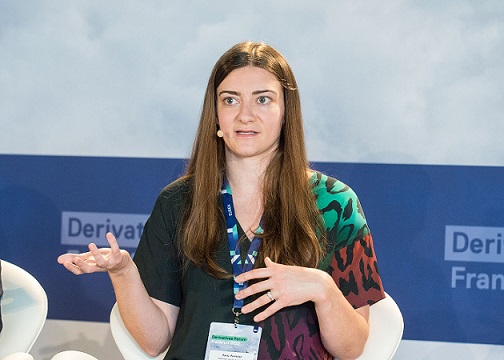07 Sep 2022
Eurex
How to reduce uncertainty and lower dividend risk in today's market
What will be the main considerations in using an exchange-traded product vs. an OTC one going forward?
Cost, counterparty risk, liquidity, flexibility, product availability, and capital considerations all remain in focus for investors. With that said it is worth noting that the specifics of a number of these parameters are changing. A decade of investment from exchanges into the listed product suite (particularly where there historically has existed a large OTC market with no listed alternative) has resulted in the launching of Dividend Futures, MSCI Futures, and Total Return Futures, amongst others. Capital considerations is another parameter that has seen significant change, with the introduction of Uncleared Margin Rules (UMR): clients have seen a simplification of their OTC Variation Margin (VM) largely bringing this in line with listed, and many are now seeing a requirement to post Initial Margin (IM) on OTC positions.
Is there a logic to trading FTSE products alongside other key index products at one venue (exchange/central clearing house)?
When a client has decided they are looking for a listed implementation, they next look at choosing a specific product. Amongst other factors, they often consider their commission schedule, orderbook width and depth, dealers willingness to provide block liquidity, and margin amounts and terms. Where exchanges offer portfolio based margining clients should be aware of the potential netting benefit they can receive by consolidating positions with an (at least partially) offsetting risk at one venue.
FTSE Total Return Futures vs. regular price return futures – what are the benefits for end clients and who/why should consider the switch?
Total Return Futures reduce a significant amount of the dividend risk that is embedded into typical price return futures, and with the FTSE specifically, because dealers receive 100% of the dividend amount there is no dividend risk taken. Ultimately this all leads to less risk charges faced by the client, as the dealer is reducing the uncertainty around their hedging costs. As such, clients implementing FTSE positions to express delta views should consider the Total Return Future as an alternative to the Price Return. Those trading Price Return futures specifically to express a dividend view clearly should continue to use the existing product. One additional advantage that stems from the removal of dividend risk is that dealers are comfortable to price longer dated tenors, which builds liquidity across the term structure. Clients can leverage this to lock in funding spreads longer term when they see them as attractive, and can even trade the funding spread component itself using long/short pairs of different maturities.
Total Return Futures are still relatively new; what are the primary differences to regular price return futures?
The treatment of the dividend component is the primary difference. In a price return future where the underlying index incorporates no dividends (when a stock goes ex it will fall by the amount of the dividend), the dealer who does receive dividend income on their hedge will discount the future today by an amount equal to their expected dividend income. With a Total Return Future in a market like the UK, where dealers receive 100% of dividends there is no need for them to estimate any future cashflows. Additionally, the rates component of the Price Return future is locked in at inception, versus the Total Return Future where the rates component snaps every day [SONIA, in the case of the FTSE product, ESTR in the case of the EURO STOXX 50 (SX5E) product].
More generally, what other products provide the opportunity to manage the impacts of UMR?
There isn’t a one size fits all approach. Clients with an existing OTC portfolio may wish to add additional trades that are risk reductive in order to manage that aggregate risk, and because the SIMM model is portfolio based, additional trades in this capacity may reduce OTC margin requirements. Client certainly should understand all avenues available to them for implementing a trade not only within the derivatives universe (both listed and OTC) but also the ETF universe. We help clients every day with these types of decisions, and allow them to optimize their implementation across a variety of parameters, including risk tolerance and performance.

Amy Borgquist, Executive Director, One Delta Structuring & Distribution, Goldman Sachs
Amy manages EMEA Institutional Client Distribution of Global Equity Index & Financing product, primarily serving Asset Managers, Pension Funds, Insurance Companies and Sovereign Wealth Funds. She helps clients with both beta optimization across Futures, Swaps, ETFs, and other bilateral structures, as well as excess cash deployment in physical and synthetic equity financing markets. Amy joined Goldman Sachs in 2014 after attaining an undergraduate degree in Economics from the University of Edinburgh. She initially worked in the UK Real Money Derivatives Sales team and subsequently moved to One Delta Structuring where she has been since early 2016.
